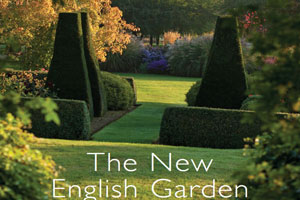The New English Garden
 In the ‘The New English Garden’, leading garden writer Tim Richardson, discusses 25 significant English gardens made or remade over the past decade. Illustrated with photography by Andrew Lawson, Jane Sebire and Rachel Warne, this was one book I knew I was probably going to enjoy.
In the ‘The New English Garden’, leading garden writer Tim Richardson, discusses 25 significant English gardens made or remade over the past decade. Illustrated with photography by Andrew Lawson, Jane Sebire and Rachel Warne, this was one book I knew I was probably going to enjoy.
I don’t know how I missed the launch of this book last Autumn as I have to declare I am a fan of the author, Tim Richardson, and the photographer Andrew Lawson, but miss it I did. Fortunately, I have now been able to redress that error and recently obtained a copy – I am not disappointed.
What gives the book its interesting angle is Tim’s choice of gardens and the reason for that choice. This is not just a collection of 25 gardens picked at random illustrated with nice pictures – there are already too many of those books languishing on bookshelves – but a survey of a wide spectrum of gardens in styles ranging from the cutting-edge naturalistic planting design of the Sheffield School to the scientific imagery of Througham Court.
‘The New English Garden’ is not a collection of gardens necessarily recently created – here the term ‘new’ also applies to gardens born out of an old one, retaining part of an older identify while developing a new character.
The author explores the high watermark of the New Perennials-inspired naturalistic planting movement (Trentham) and the Sheffield School (London 2012 Olympic Park) and examines how the ‘pendulum is swinging back’ towards a more traditional English model, with shrubs and roses making their way back into borders and a slightly more intricate planting regimen. So we find other gardens which illustrate various aspects of the contemporary scene, from the formal tradition (Tilbury) to the potager (Daylesford), the eclectic garden (Highgrove) and plantsmanship (Great Dixter).
This is a finely written book, entertaining, eloquent and informative. The author clearly sets out the scene as to why English gardens are at an exciting and fruitful juncture in the early decade of the 21st century. As he points out in his Introduction: “The level of horticultural and aesthetic sophistication in garden-making has not been so high since the early 18th century”. As you visit the various gardens in this book you can clearly start to agree his point.
I particularly enjoyed his chapters on Highgrove, Great Dixter and Waltham Place and I found the inclusion of Trentham, the Olympic Park and The Lynn Garden, Ascott, refreshing and interesting.
The gorgeous photography sets the scene perfectly, illustrating the points the author makes about each garden and its place in what many might consider a 21st century Renaissance. Lawson’s gifted photographs, are as usual, a joy, perfectly capturing spirit and place.
The author is honest enough to comment when something doesn’t work and practical enough to explain why that might be an advantage or noteworthy. His choice of gardens has been made carefully, so much so, that this is a book worthy of earnest reflection and study.
This is a coffee table book, so it is heavy, but you cannot get all that information, photography and style in anything smaller. It is a class publication by a terrific writer who perfectly sets the scene as to why the New English Garden presents all that is most interesting and arresting about garden-making in England at the start of the 21st century.
‘The New English Garden’ by Tim Richardson, published by Frances Lincoln is on sale at £40.00 hardback.

